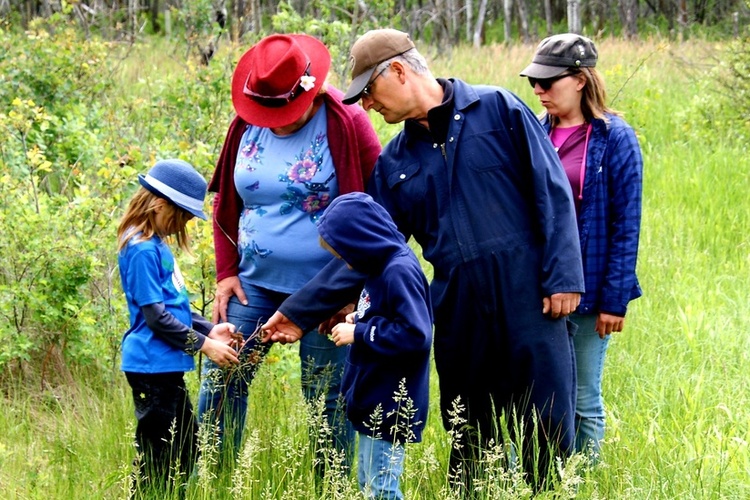Nov 10, 2020 Heritage Saskatchewan recently received the exciting news that we are an accredited Non-Government Organization for the United Nations Educational, Scientific, and Cultural Organization (UNESCO) in the field of Intangible Cultural Heritage (ICH). When I started in my first position at Heritage Saskatchewan as the ICH Development Officer, that term, “ICH” was not a familiar one to very many people, whether out in community, within the academic sphere, and even in the heritage world it was just starting to become commonplace. The UNESCO accreditation is an international recognition of the work we’ve been doing in this realm at Heritage Saskatchewan, and earns us a seat at the table of the Canadian Commission for UNESCO’s culture department. As the only Canadian organization west of Quebec to have this designation, we take our position as a voice for living heritage (which includes ICH) seriously. As for why ICH is important to safeguard, the Canadian Commission for UNESCO (CCUNESCO) states this: “Intangible cultural heritage has a role to play in: But intangible cultural heritage is chronically at risk of disappearing, in large part because of globalization.” To read more about CCUNESCO and ICH, click here. Link: https://en.ccunesco.ca/blog/2019/10/understanding-intangible-cultural-heritage Seriousness aside, exploring ICH is an exciting way to delve more deeply into heritage, and it has a special knack for connecting communities in a meaningful way, whether strengthening existing relationships or creating new ones. We have witnessed, encouraged, facilitated, and gladly participated in this process for five years now at Heritage Saskatchewan in our community engagement work across the province. Tenets of the UNESCO Convention on the Safeguarding of ICH have been at the core of our living heritage projects, Coal in Coronach, Val Marie Elevator, gee meeyo pimawtshinawn/It Was a Good Life, and presently, the forthcoming Covid-19 Culture. We use the four goals of safeguarding ICH: documentation, recognition and celebration, transmission, and community development, as the guides for our process. But in the end, communities take ICH and run with it in their own way, which is precisely the point. Saskatchewan is rich in ICH. We are arguably one of the most culturally diverse regions in the country, and there is much potential to further identify and safeguard ICH here. One of CCUNESCO’s roles is to promote cultural practices in Canada for inclusion on UNESCO’s official Lists of ICH practices. Another is to create inventories of ICH, which help identify, document, and safeguard important elements of our cultural landscape. Heritage Saskatchewan supports these worthy goals and is looking forward towards achieving them with help from organizational partners in the province. However, it’s not our job to tell a community what its cultural heritage. It’s the other way around. Our most important role is to listen to what communities tell us is significant to them -- to identify their own intangible cultural heritage. So, tell us! What elements of Saskatchewan’s intangible cultural heritage are most important to your community? If we were to build an ICH inventory, what should be in it? We are listening. In the meantime, here are a few ideas to get you started thinking. I am using the five domains of ICH from UNESCO to help refine this rich material. All the listed examples (which are just a very few that exist in Saskatchewan) were shared with me in various communities during my community engagement work over the past five years. Note that sometimes the practices listed overlap in more than one domain. Oral traditions and expressions – nearly 200 languages spoken in Saskatchewan, including languages like Michif, which has its origins on the plains; numerous dialects in Saskatchewan, often discernible by geographic region; locative nicknames (Speedy Creek, referring to places in shortened form, i.e. “Lloyd,” (Lloydminster); words/phrases that are not commonly used elsewhere, like “bunnyhug”; tales of all kinds, whether tall, folk, old wives; legends and myths (for example, the legend of the Calling Lakes); jokes and riddles; popular sayings, like “Saskatchewan is the place where you can watch your dog run away for three days.” Social practices, rituals, and festive events – fall/fowl suppers; feasts; giveaways, chivarees/sharivaris, mock weddings; high school initiations/froshing, box socials, rodeos; powwows; wearing watermelon helmets at Saskatchewan Roughriders games; King Trapper events in northern communities; festivals (like Back to Batoche Days); parades and processions; wedding and funeral customs; graduations. Performing arts – Grass dance, square dance, Red River jig, round dance, Ukrainian dance, Gaelic dance (essentially, dances of all cultural backgrounds!); choral performance, whether in choirs or solo singing; folk tunes; lullabies; drumming; fiddling; music recitals; marching bands; music festivals Knowledge concerning nature and the universe – beliefs and associated practices of many faiths and spiritual practices; berry picking (especially where the best berries are, often a closely-guarded local secret), family recipes and food preparation techniques; farming and ranching practices, especially as related to knowledge of the land and local environment, including weather and climate; food preservation methods like canning, fermenting; hunting and fishing knowledge, including dressing animals and preparing them, whether filleting, butchering, smoking, salting; myths and legends concerning natural phenomena like the Northern Lights; prognostication (i.e. reading pig spleens, setting out onions on New Year’s Eve to divine precipitation in the months to come; reading signs in nature like the size of muskrat lodges, the flight patterns of migratory birds; supernatural beliefs, including ghosts. *Note just how many examples I’ve listed here. This is perhaps because Saskatchewan people live close to our environment, so these practices tend to be listed in great detail in community workshops. Knowledge concerning the production of traditional craft – birch bark biting; beading; leather making (including saddles, harness, and other horse tack); hide tanning; quilting; knitting, crochet, embroidery, weaving, sewing and other textile production; cooking, baking and other food preparation techniques (bannock, pierogis, tourtiere, lefse, as just a few flour-based examples!); wood carving; candle making; soap making; traditional building methods, like log houses; shoemaking and repair.A Wealth of Intangible Cultural Heritage

